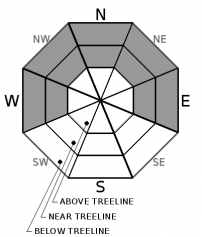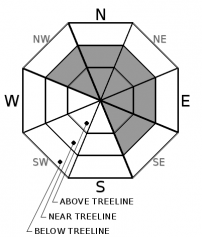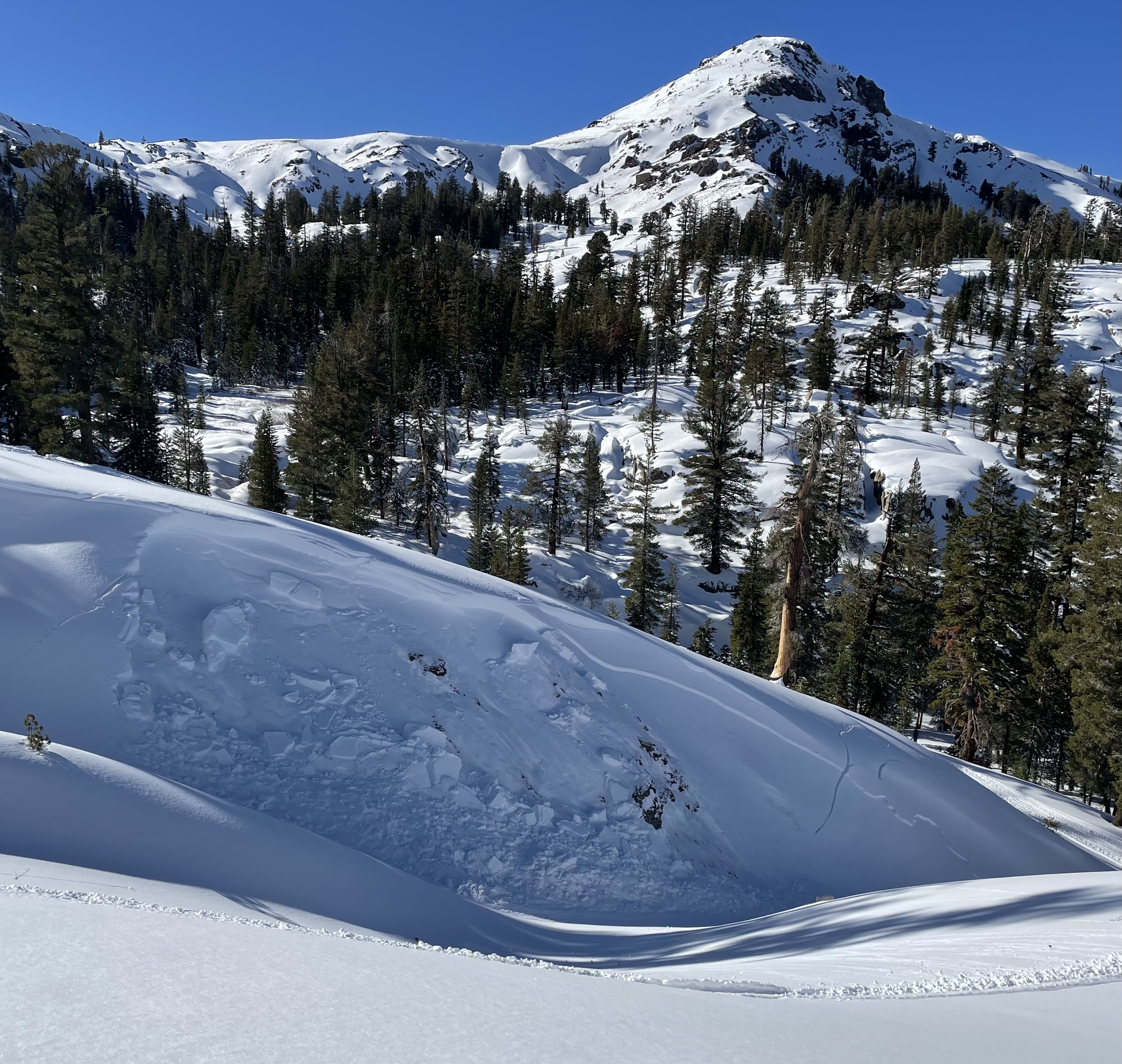| Monday | Monday Night | Tuesday | |
|---|---|---|---|
| Weather: | Sunny. Snow levels below 7000 feet. Chance of precipitation is 0%. | Clear. Snow levels below 7000 feet. Chance of precipitation is 10%. | Mostly sunny. Slight chance of snow in the morning. Snow levels below 7000 feet. Chance of precipitation is 20%. |
| Temperatures: | 44 to 49. deg. F. | 24 to 30. deg. F. | 33 to 38. deg. F. |
| Mid Slope Winds: | Light winds becoming southwest around 15 mph with gusts to 35 mph in the afternoon. | Southwest around 15 mph with gusts to 40 mph. | Southwest around 15 mph with gusts to 35 mph in the morning becoming light. |
| Expected snowfall: | No accumulation. | SWE = none. | Up to 0.5" possible. | SWE = less than 0.10 inch. | No accumulation. | SWE = trace amounts. |
| Monday | Monday Night | Tuesday | |
|---|---|---|---|
| Weather: | Sunny. Snow levels below 7000 feet. Chance of precipitation is 0%. | Clear. Snow levels below 7000 feet. Chance of precipitation is 10%. | Mostly sunny. Slight chance of snow in the morning. Snow levels below 7000 feet. Chance of precipitation is 20%. |
| Temperatures: | 41 to 46. deg. F. | 23 to 28. deg. F. | 30 to 35. deg. F. |
| Ridge Top Winds: | Southwest 15 to 25 mph. Gusts up to 55 mph in the afternoon. | Southwest 15 to 30 mph with gusts to 65 mph increasing to 30 to 45 mph with gusts to 85 mph after midnight. | Southwest 25 to 35 mph with gusts to 80 mph becoming west 15 to 25 mph with gusts to 50 mph in the afternoon. |
| Expected snowfall: | No accumulation. | SWE = none. | Up to 0.5" possible. | SWE = less than 0.10 inch. | No accumulation. | SWE = trace amounts. |





















